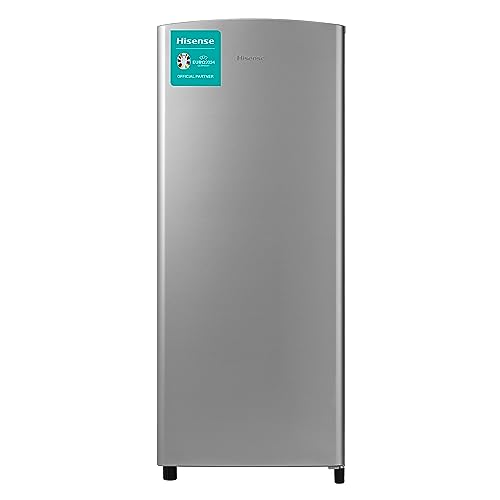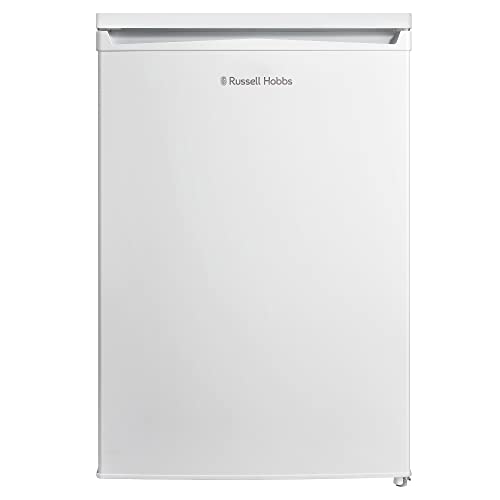How To Make A Successful Fridge With Ice Maker Strategies From Home
페이지 정보
작성자 Rodney Nanney 작성일 24-06-02 21:57 조회 6 댓글 0본문
 Benefits of a Fridge With an Ice Maker
Benefits of a Fridge With an Ice MakerMany refrigerators come with an ice maker that is built into the door or in the interior of the freezer, making it simple to dispense cold, fresh-tasting water. These fridges can be more expensive, but they keep you from having to refill and clean Ice trays.
 The circuit in the icemaker sends current to an ice valve. The water then flows through the ice mold and freezes to form cubes.
The circuit in the icemaker sends current to an ice valve. The water then flows through the ice mold and freezes to form cubes.Convenience
It is evident that having an icemaker in your fridge can save you time. Instead of having to fill tray manually the ice maker can do this for you. It is usually activated by a sensor which detects water levels in the freezer, and once it reaches the appropriate temperature, the ice-making process begins. A valve opens, and a cooling unit allows water to flow into the molds to make ice. A built-in thermometer is used to measure the ice and shuts the valve once it is frozen.
This is also useful when you're hosting guests. You'll always have plenty of ice, and you can avoid embarrassing moments when guests ask for more ice only to find out that you're not in. You can find refrigerators with an icemaker with an ice maker inside the door. This makes it easy to serve water and access the ice without opening the under counter fridge hotpoint.
Refrigerators that have ice makers are also more energy efficient than traditional models. The ice-making system requires only a tiny amount of electricity to run, and since they are usually used for long periods of time, this can result in a significant reduction of your energy bills.
If you're looking to save even more money, you can opt for a model without a cooling tower. These "direct cool" units are fridges that come with an ice maker. They use the same refrigerant to make ice that they use to cool your fridge. These refrigerators are more efficient than standard ice machines and can cut your energy consumption by up to 25 percent. This will help you save money on your utilities and help you reduce your carbon footprint at the same time.
Efficiency
With an Ice maker, you can save time by not having to fill and freeze ice cubes. They also provide a constant supply fresh ice that can be poured into your cup or pour from the refrigerator. These devices are more efficient than refrigerators that require you go into the freezer to get an ice bag that has been frozen.
The majority of refrigerators with ice makers are combo models that feature an ice maker inside the freezer compartment as well as a traditional refrigerator under counter fridge black compartment. There are also standalone fridges and freezers with ice makers integrated in the door or back of freezer.
The ice maker inside your refrigerator is typically powered by the main water supply for your home. A timed switch within the circuit sends a brief current through the electrical wires and to the water valve. The valve is opened which allows water to flow into the molds. Once the ice-making process has been done, the built-in thermistor indicates the timed switch that the ice has been cooled sufficiently to stop the flow of water into the molds. A motor rotates a shaft that has arms that transport the ice into the ice bin.
Some ice machines permit users to choose between two types of ice: standard ice cubes and crushed ice. This is a great option in hot weather, when you're looking to reduce the time it takes to cool your drink down.
If your ice maker isn't producing ice, or the resultant ice is small and misshapen, it may be because your freezer was set to a low temperature. Check your owner's manual to find the manufacturer-recommended temperature and try setting it higher.
If your ice machine is not making ice or is producing a small amount it could be due to the water fill tubes are blocked. The ice-making machine draws its water from your household's main water supply line, which means these tubes need to be free of obstructions for them to function effectively. The tubes may become blocked in time because of mineral deposits depending on the quality of the water in your home. They can be cleared using a pipe-cleaner or running the water line of your refrigerator through an filtration.
Water Dispenser
Refrigerators with Ice makers have a water dispenser that allows you to access chilled, filtered water with no need to open the refrigerator door. Some models allow you to add carbon dioxide for sparkling water, or pour hot water into a coffee maker, teapot and more. These models usually cost more than fridges with ice makers, and require an additional water line to access the water that is melted and transformed into ice for your enjoyment.
In the 1980s, refrigerators began offering ice and drinking water dispensers. These were essentially automated ice makers that made one block of ice a day. Today, around half of all refrigerators feature an ice maker built-in and a water dispenser.
The dispenser draws cold water from the fridge plumbing and transports it to a small filter that screens out some basic contaminants. The water is then pumped into an ice mould, where it is transformed from liquid into the form of a solid block of ice. The ice is stored in a collection bin until it's ready to dispensed.
When you want to drink a glass of water, a timed switch within the circuit in your refrigerator sends a current down two wires connected to the dispenser. This current triggers a solenoid that opens the water valve for seven seconds, allowing just enough water to fill an ice mold. The ice mold is usually an unplastic well that has many cavities. When the ice is made, the valve shuts again and allows the frozen cubes to fall out of the mold into the bin where they await to be distributed.
Most problems with fridge water or ice dispensers can be resolved with a little troubleshooting. Visit our Fridge Dispenser Troubleshooting page for more information.
You can also find an alternative to refrigerator water and ice dispensers by using traditional ice cube tray that you can fill up at your kitchen sink. These trays hold up to 25 cups and permit you to select the amount of ice to have at any point.
Cost
The convenience of having an ice maker in your refrigerator comes with an expense. american style fridges with an ice maker tend to be more expensive than those that don't have one, as they have to be professionally installed and connected to a water supply and might require more maintenance or repairs. Also, refrigerators with Ice makers use more energy.
The majority of fridges and freezers equipped with an ice maker allow you to make standard ice and crushed ice. Many also have a selection of sizes and shapes to choose from, so you can personalize the ice you make according to your preferences.
It's normal for people to become accustomed to a specific kind of ice, only to be disappointed when they cannot find it at the grocery store or restaurant. If you have an icemaker in your refrigerator you can avoid the problem by setting it up to automatically make your favorite type of ice.
If you are a frequent drinker or host large gatherings it can be difficult to run out of ice. If you're sitting on your own after a hard workout, relaxing with your partner after a long day, or entertaining friends and family at home, you should enjoy an ice cold drink whenever you want.
One of the major benefits of having a fridge equipped with an ice maker is that it provides you with peace of mind knowing you'll have an unlimited supply of Ice for any occasion. If the appliance malfunctions, you will need to get a professional in to fix it.
The average cost of a fridge or standalone ice maker repair depends on the issue, the model and the appliance. Here are a few of the most common problems:
If your refrigerator's ice maker doesn't seem to be functioning, it could be due to a clogged tube or faulty valve. These components are electrically powered that are susceptible to damage over time, so hiring a professional to repair them could cost anywhere from $150 to $200.
- 이전글 9 Lessons Your Parents Taught You About Situs Gotogel Terpercaya
- 다음글 Responsible For A 2 In 1 Prams Budget? Twelve Top Ways To Spend Your Money
댓글목록 0
등록된 댓글이 없습니다.